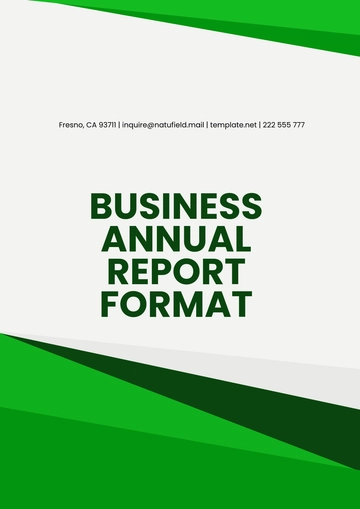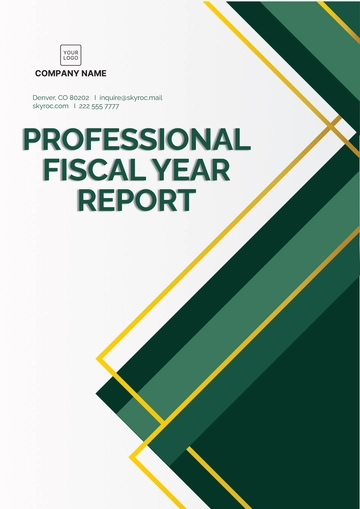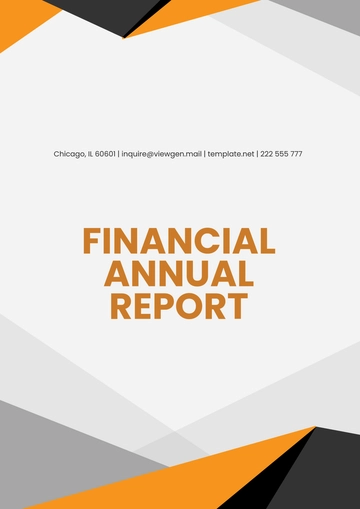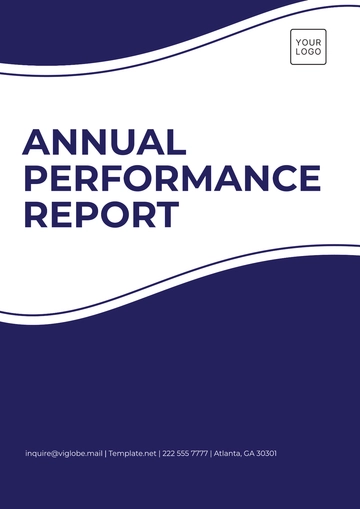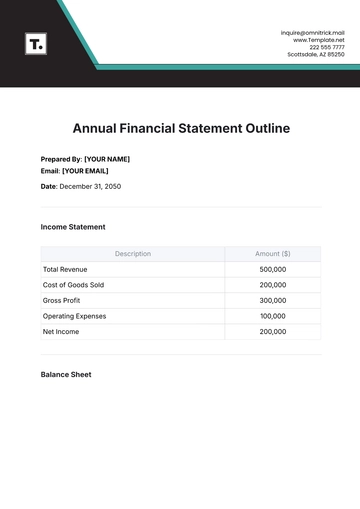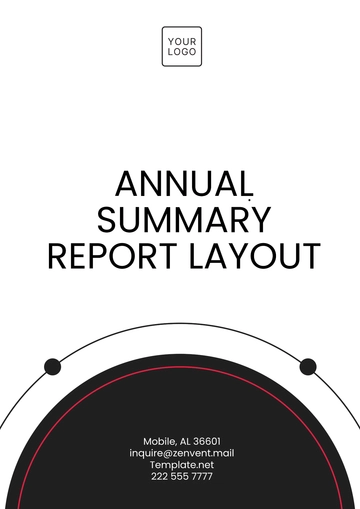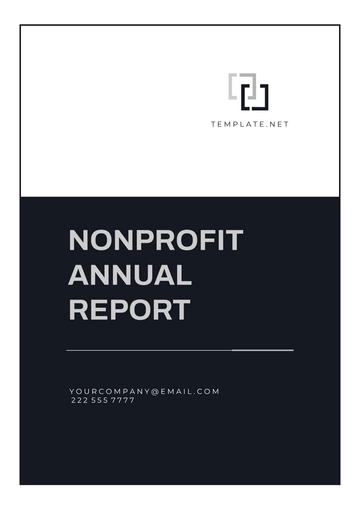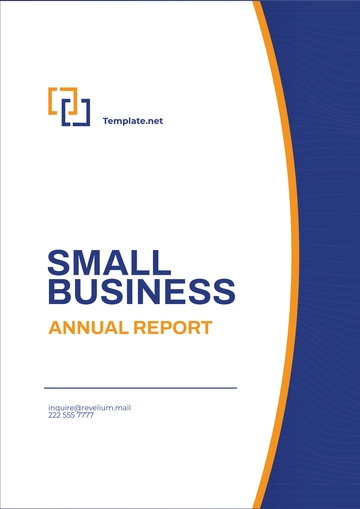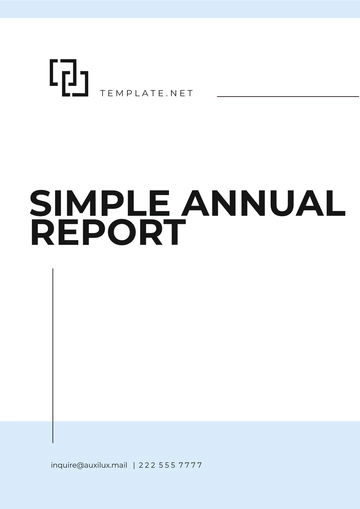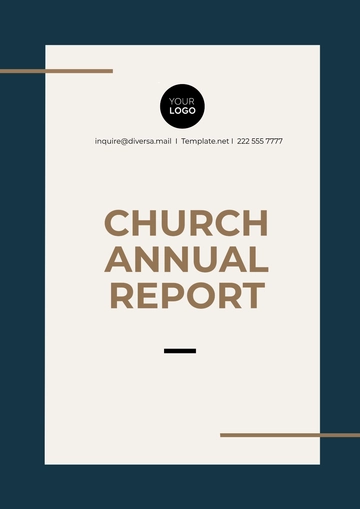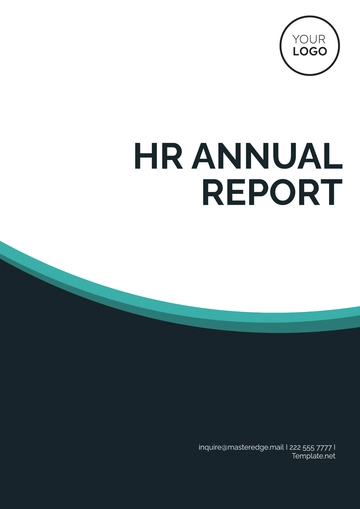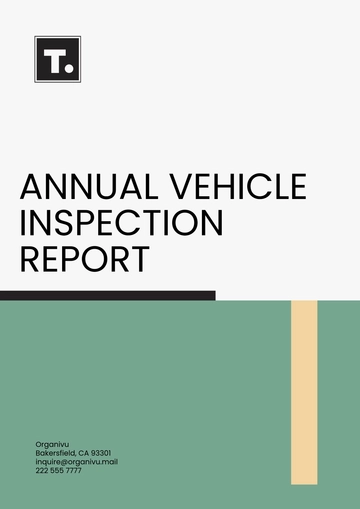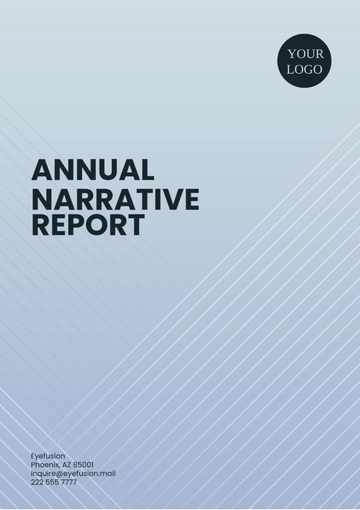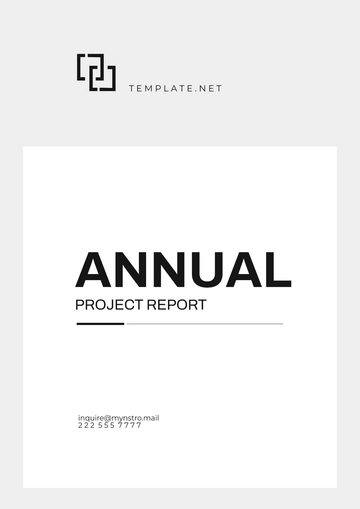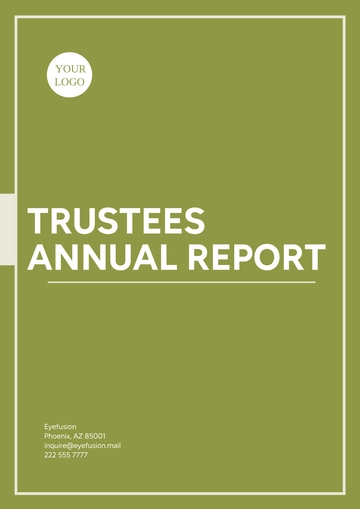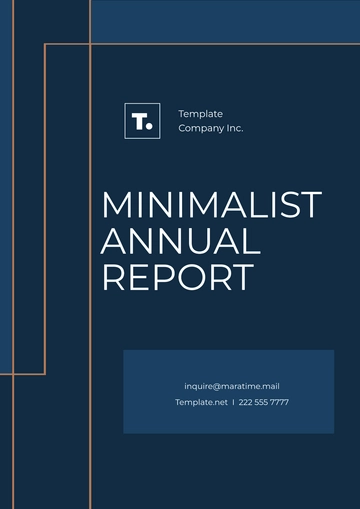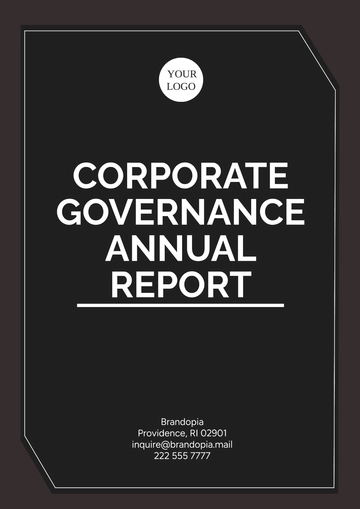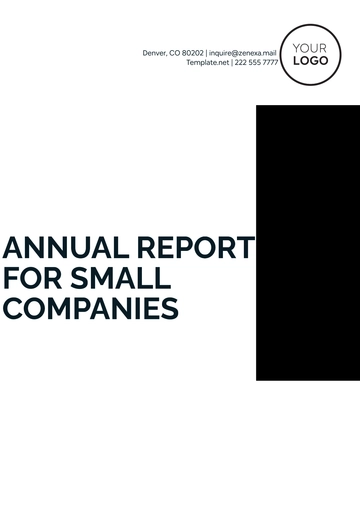Free Summary Annual Report
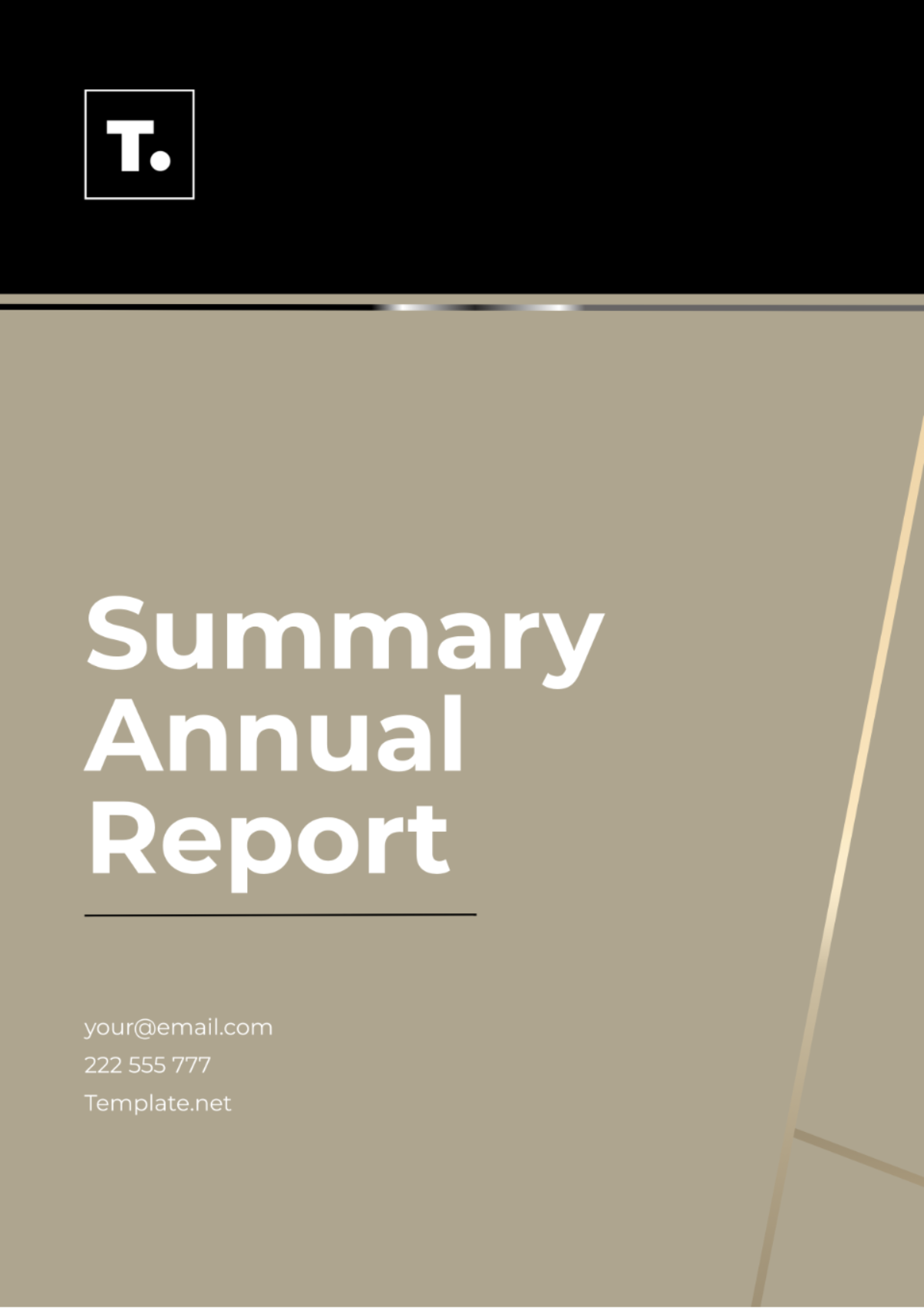
Prepared by: [YOUR NAME]
Company: [YOUR COMPANY NAME]
Date: [DATE]
I. Executive Summary
The [SUMMARY ANNUAL REPORT] serves as a comprehensive overview of the [YOUR COMPANY NAME]'s performance, achievements, and key highlights for the fiscal year. This section provides stakeholders with a condensed summary of the organization's financial results, strategic initiatives, and notable accomplishments.
[Prepared By]: [YOUR NAME]
[Department]: [YOUR DEPARTMENT]
The Executive Summary offers a snapshot of the organization's performance, highlighting key metrics such as revenue, profitability, and market share. It outlines the organization's strategic priorities and initiatives undertaken to drive growth and sustainability. Additionally, it sets the stage for a detailed exploration of various aspects covered in subsequent sections.
II. Financial Performance
The Financial Performance section offers insights into [YOUR COMPANY NAME]'s financial health and stability, presenting key financial metrics and analyses for the fiscal year.
A. Revenue and Profitability
Total Revenue: [Amount generated in the fiscal year]
Net Profit: [Net profit margin and amount]
Revenue Growth: [Percentage increase/decrease compared to the previous year]
B. Financial Ratios
Profit Margin: [Percentage indicating profitability]
Debt-to-Equity Ratio: [Ratio indicating financial leverage]
Return on Investment (ROI): [Percentage indicating return on investment]
III. Methodology
The Methodology section outlines the approach and methods utilized in preparing the [SUMMARY ANNUAL REPORT]. It provides insights into how data was collected, analyzed, and interpreted to generate the report's content.
A. Data Collection
Financial Data: [Sources from which financial data was obtained, such as financial statements, accounting records, etc.]
Operational Data: [Methods used to collect operational data, including surveys, interviews, internal reports, etc.]
CSR Initiatives: [Sources of information on CSR activities, including internal reports, interviews with CSR team members, etc.]
B. Data Analysis
Financial Analysis: [Techniques used to analyze financial data, such as ratio analysis, trend analysis, etc.]
Operational Analysis: [Methods employed to analyze operational data, including benchmarking, SWOT analysis, etc.]
CSR Evaluation: [Criteria used to evaluate CSR initiatives, such as impact assessment, stakeholder engagement, etc.]
C. Interpretation
Key Findings Identification: [Process of identifying key findings from the analyzed data]
Trend Identification: [Methods used to identify trends and patterns in the data]
Insights Generation: [Approach to generating insights and conclusions based on the interpreted data]
IV. Findings
The Findings section presents the key insights and outcomes derived from the analysis conducted for the [SUMMARY ANNUAL REPORT]. It offers a comprehensive overview of the organization's performance and achievements for the fiscal year.
A. Financial Performance Findings
Revenue Growth: [Summary of revenue growth trends and factors influencing revenue generation]
Profitability Analysis: [Analysis of profitability metrics, including net profit margin, return on investment, etc.]
Financial Stability: [Assessment of the organization's financial stability based on key financial indicators]
B. Operational Performance Findings
Product/Service Innovation: [Summary of innovative initiatives undertaken and their impact on operational performance]
Customer Satisfaction: [Analysis of customer feedback and retention rates to gauge customer satisfaction]
Operational Efficiency: [Assessment of operational efficiency improvements and their contribution to overall performance]
C. CSR Impact Findings
Environmental Sustainability Impact: [Evaluation of the organization's environmental sustainability initiatives and their impact]
Community Engagement Impact: [Assessment of the organization's community engagement efforts and their effectiveness]
Overall CSR Performance: [Summary of the organization's overall CSR performance and its alignment with sustainability goals]
V. Recommendations
The Recommendations section provides actionable insights and suggestions for [YOUR COMPANY NAME] based on the findings presented in the report. It offers strategic recommendations to optimize performance, address challenges, and capitalize on opportunities for future growth and sustainability.
A. Financial Strategy Recommendations
Revenue Diversification: [Recommendations for diversifying revenue streams to mitigate risk]
Cost Management: [Strategies for optimizing costs and improving profitability]
Investment Opportunities: [Suggestions for potential investment opportunities to fuel growth]
B. Operational Improvement Recommendations
Process Optimization: [Recommendations for streamlining processes and improving operational efficiency]
Customer Experience Enhancement: [Strategies for enhancing the customer experience to drive satisfaction and loyalty]
Innovation Investments: [Suggestions for investing in innovation to maintain competitiveness]
C. CSR Enhancement Recommendations
Sustainability Initiatives Expansion: [Recommendations for expanding sustainability initiatives to reduce environmental impact]
Community Partnership Development: [Strategies for fostering meaningful partnerships with communities to drive social impact]
Employee Engagement Programs: [Suggestions for implementing employee engagement programs to enhance CSR participation and impact]
VI. Conclusion
In conclusion, the [SUMMARY ANNUAL REPORT] provides stakeholders with a comprehensive overview of [YOUR COMPANY NAME]'s performance and achievements for the fiscal year. By highlighting financial results, operational successes, strategic initiatives, and CSR efforts, the report demonstrates [YOUR COMPANY NAME]'s commitment to delivering value to stakeholders while operating responsibly and sustainably. Through continued innovation, strategic planning, and corporate citizenship, [YOUR COMPANY NAME] aims to drive growth, create positive impact, and foster long-term success in the years ahead.
- 100% Customizable, free editor
- Access 1 Million+ Templates, photo’s & graphics
- Download or share as a template
- Click and replace photos, graphics, text, backgrounds
- Resize, crop, AI write & more
- Access advanced editor
Experience unparalleled efficiency in annual reporting with the Summary Annual Report Template from Template.net. This editable and customizable template simplifies the compilation of comprehensive summaries. Seamlessly editable within our Ai Editor Tool, craft professional reports effortlessly, tailored to your exact specifications. Elevate your reporting standards with ease and precision like never before.
You may also like
- Sales Report
- Daily Report
- Project Report
- Business Report
- Weekly Report
- Incident Report
- Annual Report
- Report Layout
- Report Design
- Progress Report
- Marketing Report
- Company Report
- Monthly Report
- Audit Report
- Status Report
- School Report
- Reports Hr
- Management Report
- Project Status Report
- Handover Report
- Health And Safety Report
- Restaurant Report
- Construction Report
- Research Report
- Evaluation Report
- Investigation Report
- Employee Report
- Advertising Report
- Weekly Status Report
- Project Management Report
- Finance Report
- Service Report
- Technical Report
- Meeting Report
- Quarterly Report
- Inspection Report
- Medical Report
- Test Report
- Summary Report
- Inventory Report
- Valuation Report
- Operations Report
- Payroll Report
- Training Report
- Job Report
- Case Report
- Performance Report
- Board Report
- Internal Audit Report
- Student Report
- Monthly Management Report
- Small Business Report
- Accident Report
- Call Center Report
- Activity Report
- IT and Software Report
- Internship Report
- Visit Report
- Product Report
- Book Report
- Property Report
- Recruitment Report
- University Report
- Event Report
- SEO Report
- Conference Report
- Narrative Report
- Nursing Home Report
- Preschool Report
- Call Report
- Customer Report
- Employee Incident Report
- Accomplishment Report
- Social Media Report
- Work From Home Report
- Security Report
- Damage Report
- Quality Report
- Internal Report
- Nurse Report
- Real Estate Report
- Hotel Report
- Equipment Report
- Credit Report
- Field Report
- Non Profit Report
- Maintenance Report
- News Report
- Survey Report
- Executive Report
- Law Firm Report
- Advertising Agency Report
- Interior Design Report
- Travel Agency Report
- Stock Report
- Salon Report
- Bug Report
- Workplace Report
- Action Report
- Investor Report
- Cleaning Services Report
- Consulting Report
- Freelancer Report
- Site Visit Report
- Trip Report
- Classroom Observation Report
- Vehicle Report
- Final Report
- Software Report

